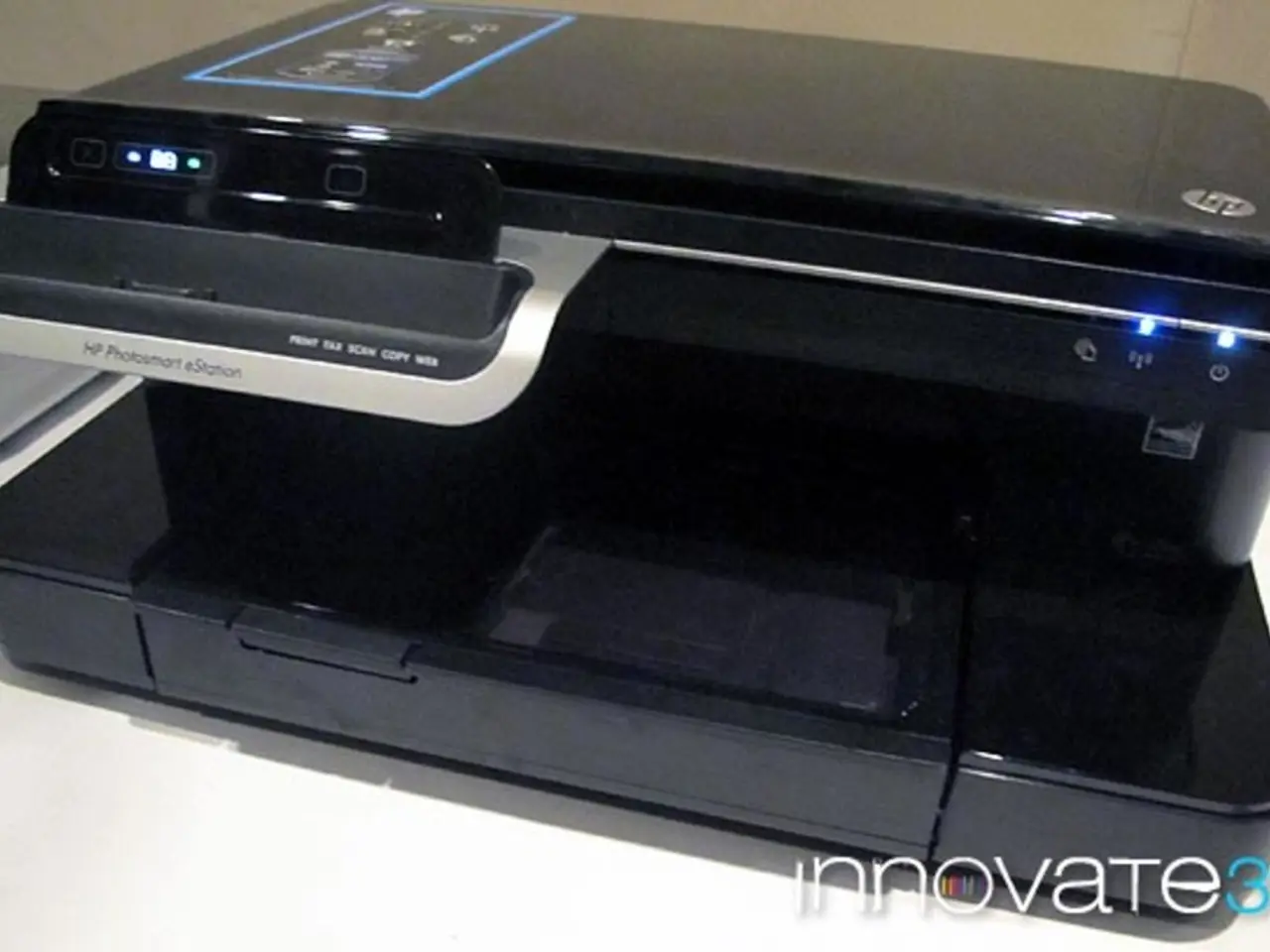Thermal Printer's Inkless Printing: A Closer Look at How They Work
Thermal printers, a common sight in retail and logistics environments, are devices that use heat to transfer images onto paper, often used in applications such as labeling, receipt printing, and shipping. Unlike traditional printers, they do not require costly ink cartridges, making them a cost-effective solution for businesses.
Instead, thermal printers rely on heat to create images on specially coated paper. The printer's thermal printhead contains tiny heating elements that selectively heat the paper as it passes by. This heat activates a heat-sensitive chemical coating on the paper, which darkens where heated to form text or images—no ink or toner is required.
There are two main types of thermal printing: Direct Thermal Printing and Thermal Transfer Printing.
In Direct Thermal Printing, the printhead directly heats thermal paper coated with a special heat-sensitive layer. The coating changes color where heated, generating the print. This process requires specialized thermal paper since regular paper lacks the necessary coating.
On the other hand, Thermal Transfer Printing uses a ribbon coated with ink. The printhead heats the ribbon, melting or sublimating the ink, which transfers onto regular paper or other media. The ink sticks to the surface to create durable images.
Regular cleaning, monitoring media usage, and inspecting print quality are essential practices for maintaining a thermal printer. This includes routine checks and adjusting settings for optimal performance. To avoid running out during critical printing tasks, it's important to keep an eye on the supply of thermal paper or ribbons.
Prints produced by thermal transfer printing are more resistant to fading and environmental conditions compared to those made with inkjet printers, which can degrade over time. This makes thermal transfer prints better suited for outdoor use or situations in which labels may be exposed to chemicals.
Thermal printers typically produce prints faster than inkjet printers, making them suitable for high-demand environments like retail and logistics where quick printing is essential. However, they do require thermal paper or ink ribbons that will eventually need replacing.
If issues like smudging or uneven coverage are detected, it may be necessary to perform cleaning maintenance on the printer. Familiarize yourself with your thermal printer's settings and features, and ensure that the settings selected align with the specific type of thermal media being used.
To ensure compatibility with changing media types, it's important to stay updated on your printer's software and drivers. Proper storage of thermal media is essential to maintain their quality and extend their shelf life. Keep thermal paper and ribbons away from moisture and extreme temperatures.
When cleaning the print head and interior components, use specialty cleaning kits or cloths designed for thermal printers to ensure safe and effective cleaning. Establish a routine for examining printed materials carefully and conducting thorough examinations to catch any issues early.
In summary, thermal printers offer a fast, ink-free, and cost-effective solution for businesses that require high-demand printing, especially in retail and logistics environments. By understanding the two main types of thermal printing, maintaining the printer, and properly managing thermal media, businesses can ensure reliable and efficient printing solutions.
Thermal printers, relying on heat to create images without ink or toner, offer a fast and cost-effective solution for businesses in high-demand environments, particularly retail and logistics. There are two main types of thermal printing: Direct Thermal Printing and Thermal Transfer Printing, with each method using specialized thermal paper or a ribbon coated with ink.




